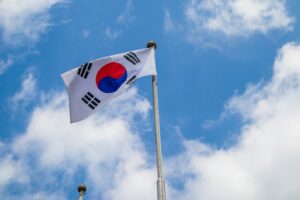Distinguishability is the defining trait of a Trademark. A proper mark could give a brand its unique identity that makes it stand out in the market place so that it could attract consumers, which in turn could build a loyal customer base. Distinguishability is also an essential in Trademark Law, as you obviously cannot register a mark that is identical to an already registered mark. As regulated in Article 20 of the Trademark Law which stipulates that a mark cannot be registered if it does not have distinctiveness.
This begs the question, what would qualify as “unique” in terms of trademarks? How do you determine distinguishability in this context?
Geoffrey Hobbs QC classifies the concept of distinction into two categories, namely natural (nature) and use (nurture). He based this on the term “devoid of any distinctive character” as stipulated in Article 3 paragraph (1) letter (b) of the Trade Marks Act 1994 of United Kingdom.
According to Hobbs, the concept of natural distinction (nature) is a distinction from the appearance which can immediately distinguish one good or service from another. Meanwhile, the concept of distinction by use (nurture) in which the distinction is the functionality and is only apparent when in use.
Meanwhile, In the United States, the case Abercrombie & Fitch Co. v. Hunting World, Inc. has greatly contributed to the topic of trademark distinction. Judge Friendly, in his influential decision in the 1976 Second Circuit Court of Appeals, established the “Abercrombie classification“, also known as the “spectrum of distinctiveness”. This method of divides distinguishability into five categories, both for marks that are eligible for registry and mark that aren’t. The categories are:
- Fanciful
Fanciful marks are marks that are based on a name that does not clearly describe their goods or services. The names used for these marks are not in any dictionary and are not well known by the general public. They are self-made words strictly for the purposes of being a brand. Google, Samsung and Nokia are some examples of fanciful marks.
- Arbitrary
An Arbitrary mark uses a common word that has no relation to the product or service on which it is used. The word is used in an untypical or subversive way. For example: Apple is a company that develops and sells computer products, not fruits. While Bathing Ape is a fashion company that has no actual relation to wild primates or hygienic activities.
- Suggestive
A Suggestive mark suggests a quality or characteristic of the product or service, but it encourages imagination, though or perception to connect the mark with the product and service. Suggestive Marks are considered distinctive, but it could difficult to determine on whether a mark would be considered suggestive or descriptive.. Example :KIJANG (for car product), KIJANG in means deer in Indonesian. They are nown as fast and agile animals, which suggest that the cars share those qualities.
- Descriptive
Refers to Trademarks that uses common language to describe the quality, content, effects or other characteristics of the product without the need for imagination. When marks are considered to merely descriptive, they are generally not qualified for any trademark protection although if it can be shown that a descriptive term has acquired some secondary meaning that is associable with a given party, it may still be applicable for trademark protection.
- Generic
The Generic mark is the mark that describes the genus of products it represents in a straightforward manner. For example, “car” is a generic term. Generic terms are not valid any trademark protection.
Based on the spectrum of distinctiveness, there are marks that inherently distinctive, namely the Fanciful, Arbitrary and Suggestive mark. These caterogires have sufficiently strong distinction and have a higher possibility of being registered as long as they do not conflict with the provisions of the Trademark Law.
In addition, descriptive mark is capable of being considering distinguishable. Usually, a descriptive mark cannot be protected because the distinguishing element is weak, unless the brand already has an additional meaning or Secondary Meaning. Secondary Meaning can exist through the efforts of the brand owner in making the general public recognize the origin or owner of the brand (single source of goods). A descriptive mark that can build a secondary meaning, has a strong distinctiveness could be eligible for trademark registry. The Generic Mark, however, is incapable of becoming distinctive and can never be registered.
Conclusion
In essence, the spectrum of distinctiveness, as delineated through concepts like the Abercrombie classification and Geoffrey Hobbs QC’s nature versus nurture distinction, is fundamental in assessing the eligibility of trademarks for registration. Understanding the nuances between fanciful, arbitrary, suggestive, descriptive, and generic marks is pivotal in navigating the complexities of trademark law.
At Am Badar & Am Badar, our team specializes in Intellectual Property law, providing comprehensive guidance and legal expertise for all your trademark and IP-related needs. Contact us at ambadar@ambadar.co.id for further information
Source :
Indonesian Trademark Law N0 20 of 2016 on Trademark and Geographical Indication
Rahmi Jened, Hukum Merek (Trademark Law) (Jakarta : Kencana Prenadamedia Group, 2015)
Dustin Marlan, ‘Visual Metaphor and Mark Distinctiveness’ (2018) 93 Washington Law Review






